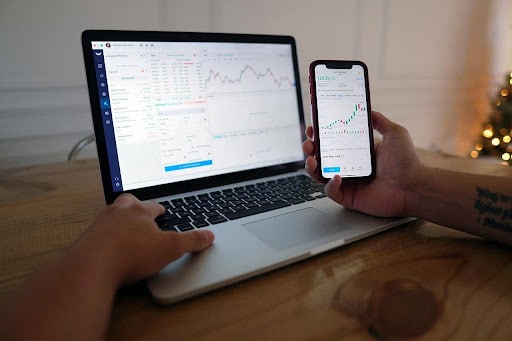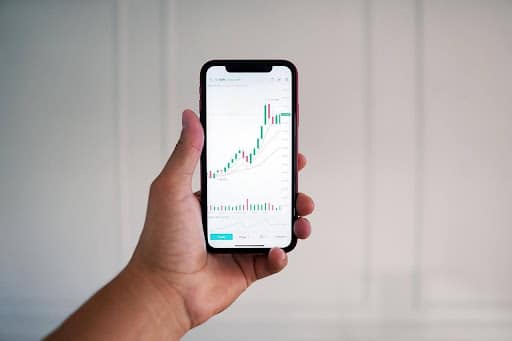In the rapidly evolving world of online forex trading in Kenya, understanding and leveraging local economic indicators can significantly enhance trading strategies and outcomes. For advanced traders, these indicators offer deep insights into the market dynamics that drive currency fluctuations. This article delves into the key economic indicators in Kenya and how traders can use them to gain a competitive edge in the forex market.
Understanding Economic Indicators
Economic indicators are statistics that provide information about the economic performance and future direction of a country. In Kenya, these indicators are crucial for forex traders aiming to predict currency movements. The main indicators include Gross Domestic Product (GDP), inflation rates, interest rates, employment figures, and trade balances.
Key Economic Indicators in Kenya
Gross Domestic Product (GDP)
- Definition: GDP measures the total value of goods and services produced in a country within a specific period.
- Importance: A rising GDP indicates economic growth and strength, which typically strengthens the national currency. Conversely, a declining GDP suggests economic weakness and can lead to currency depreciation.
- Kenya’s Context: Kenya’s GDP has shown robust growth in recent years, driven by sectors like agriculture, manufacturing, and services. Monitoring GDP trends can help traders anticipate currency movements.
Inflation Rates
- Definition: Inflation is the rate at which the general level of prices for goods and services rises, eroding purchasing power.
- Importance: High inflation often leads to a decrease in the currency’s value as purchasing power declines. Central banks may raise interest rates to combat inflation, affecting currency strength.
- Kenya’s Context: The Central Bank of Kenya (CBK) closely monitors inflation. Traders should watch for CBK’s monetary policy updates, as changes can significantly impact the forex market.
Interest Rates
- Definition: Interest rates are the cost of borrowing money. They are a primary tool for central banks to control inflation.
- Importance: Higher interest rates offer better returns on investments in that currency, attracting foreign capital and strengthening the currency.
- Kenya’s Context: The CBK sets the benchmark interest rate. Understanding CBK’s policy direction can help traders predict currency trends.
Employment Figures
- Definition: Employment figures indicate the number of people employed and the unemployment rate.
- Importance: High employment levels suggest economic strength and can boost the currency’s value, while high unemployment can weaken it.
- Kenya’s Context: Employment trends in sectors like agriculture, manufacturing, and services are critical for assessing economic health. Traders should monitor employment reports from Kenya National Bureau of Statistics (KNBS).
Trade Balances
- Definition: The trade balance is the difference between a country’s exports and imports.
- Importance: A trade surplus (exports > imports) strengthens the currency, while a trade deficit (imports > exports) weakens it.
- Kenya’s Context: Kenya’s trade balance is influenced by its major exports like tea, coffee, and horticultural products. Keeping an eye on trade data helps traders gauge currency strength.
How to Leverage Economic Indicators
Real-Time Data Monitoring
- Tools: Utilize platforms like Bloomberg, Reuters, and local financial news websites for real-time updates on economic indicators.
- Impact: Immediate access to data allows traders to make informed decisions quickly, capitalizing on market movements.
Analyzing Trends
- Historical Data: Study historical data to understand trends and patterns.
- Predictive Analysis: Use predictive analytics to forecast future movements based on past data.
Integrating Economic Indicators into Trading Strategies
- Fundamental Analysis: Combine economic indicators with other fundamental analysis tools to get a comprehensive market view.
- Technical Analysis: Use economic data to support technical analysis, confirming trends and patterns identified through charts and graphs.
Case Study: Using GDP Data in Trading
- Scenario: Suppose Kenya reports a higher-than-expected GDP growth rate.
- Action: Traders anticipate a stronger Kenyan Shilling (KES) and may increase long positions in KES pairs.
Trading Strategies Based on Economic Indicators
Leveraging local economic indicators effectively requires a blend of strategic planning and real-time analysis. Here are advanced strategies to consider:
GDP Growth Strategy
- Positive GDP Growth: When Kenya reports strong GDP growth, it signals economic health, leading to potential appreciation of the Kenyan Shilling (KES). Traders can capitalize on this by:
- Entering Long Positions: Buy KES against weaker currencies.
- Monitoring Sector Performance: Focus on sectors driving the GDP growth for more targeted trading.
- Negative GDP Growth: Conversely, a decline in GDP can lead to KES depreciation. Traders might:
- Entering Short Positions: Sell KES against stronger currencies.
- Hedging: Use hedging strategies to protect against potential losses.
Inflation Rate Analysis
- Rising Inflation: High inflation often prompts the Central Bank of Kenya to increase interest rates to stabilize the economy. Traders can:
- Interest Rate Speculation: Anticipate rate hikes and buy KES before official announcements.
- Safe-Haven Assets: Shift investments to currencies or assets considered safe havens.
- Falling Inflation: Lower inflation may lead to interest rate cuts, making KES less attractive. Strategies include:
- Shorting KES: Sell KES in anticipation of depreciation.
- Diversifying Portfolios: Include other currencies and commodities to mitigate risks.
Interest Rate Dynamics
Interest rate changes by the Central Bank of Kenya are crucial indicators for forex traders. Strategies based on interest rates include:
- High Interest Rates: Attract foreign investments, strengthening KES. Traders should:
- Carry Trade: Borrow in currencies with low-interest rates and invest in KES.
- Long KES Positions: Increase holdings in KES pairs.
- Low Interest Rates: Discourage foreign investments, weakening KES. Traders might:
- Short KES Positions: Reduce holdings in KES pairs.
- Seek Alternatives: Invest in higher-yielding currencies or assets.
Employment Figures Strategy
Employment data offers insights into economic health. Strategies include:
- Rising Employment: Indicates economic growth, potentially strengthening KES. Traders can:
- Increase Long Positions: Buy KES in anticipation of continued economic strength.
- Sector Analysis: Focus on sectors with significant job growth for targeted trading.
- Falling Employment: Suggests economic weakness, potentially weakening KES. Strategies include:
- Entering Short Positions: Sell KES in anticipation of economic decline.
- Defensive Trading: Shift to safer assets or currencies.
Trade Balance Tactics
Kenya’s trade balance significantly impacts KES value. Strategies based on trade data include:
- Trade Surplus: Indicates strong exports, potentially strengthening KES. Traders can:
- Long KES Positions: Buy KES against currencies of trade partners with weaker economic performance.
- Commodity Focus: Trade KES in relation to major exports like tea and coffee.
- Trade Deficit: Indicates higher imports than exports, potentially weakening KES. Traders might:
- Short KES Positions: Sell KES in anticipation of depreciation.
- Currency Pairs: Focus on pairs with currencies from countries that are major import sources.
Real-World Applications and Case Studies
Case Study 1: Responding to Central Bank Announcements
- Scenario: The Central Bank of Kenya announces an unexpected interest rate hike.
- Strategy: Traders who anticipated the move based on inflation trends and economic data can:
- Buy KES: Against other currencies, leading to immediate gains as the market reacts.
- Short Weak Currencies: Like USD or EUR if they are underperforming relative to KES.
Case Study 2: Leveraging Trade Data
- Scenario: Kenya reports a significant trade surplus driven by a booming tea export market.
- Strategy: Traders can:
- Long KES: Particularly against currencies from major importers of Kenyan tea.
- Sector-Based Trading: Focus on forex pairs involving countries with high tea consumption.
Conclusion
For advanced forex traders in Kenya, understanding and leveraging local economic indicators is crucial for developing successful trading strategies. By monitoring and analyzing GDP, inflation rates, interest rates, employment figures, and trade balances, traders can make informed decisions that enhance their trading performance. These indicators not only provide insights into the economic health of Kenya but also help predict currency movements, allowing traders to stay ahead in the competitive forex market.
Integrating these strategies into your trading routine requires diligence and continuous learning. Stay updated with the latest economic reports and central bank announcements to adapt your strategies promptly. With a robust understanding of economic indicators and their implications, forex traders in Kenya can navigate the market more effectively and achieve greater success.




